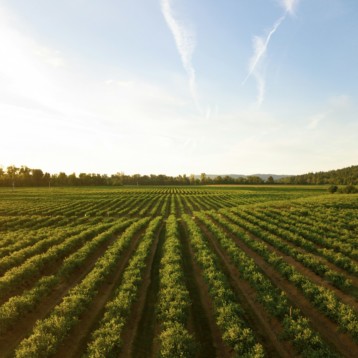The California based company Flometrics recently completed tests of biodiesel fuel in rockets originally designed for kerosene propulsion. Although the tests did not run the Rocketdyne LR-101 engine at full thrust, results showed a mere four percent degradation in performance when using the biofuel instead of traditional fuel. In return for the slightly lowered performance, biofuel powered rockets can hold more fuel in the same sized tank because it is slightly denser than kerosene.
 |
Flometrics staff working on the rocket
before launch (Credit: Flometrics) |
|
Performed during January of 2009 in the Mojave Desert, these initial tests are just the first step in the full evaluation process of biodiesel as rocket fuel. For this first trial, Flometrics began by firing the rocket using its traditional RP-1 kerosene rocket fuel and liquid oxygen (LOX). They allowed the pressures to stabilize and then measured the LOX pressure, chamber pressure, and fuel pressure about six seconds into the firing. The chamber pressure is directly proportional to the thrust in this type of rocket engine, allowing thrust to be extrapolated from the taken measurements. These numbers were used as the control numbers to compare against the biofuel performance.
The test was then repeated with biodiesel fuel and the same measurements taken. The mass flow rate, or rate that the fuel was consumed, was calculated from these measurements and the known fuel density difference to determine a qualitative performance rate compared to the kerosene fuel was determined.
Over the course of the burn, the chamber pressure using kerosene fuel averaged 291.8 psi (pounds per square inch), while the biodiesel averaged 284.9 psi, a 2.9% difference. The average fuel tank pressure using kerosene was 418.6 psi, while the biodiesel averaged 402.4 psi, a 3.9% difference. The liquid oxygen tank pressure averaged 418.5 psi with kerosene and 404.9 psi with biodiesel, a 3.2% difference.
 |
Biodiesel rocket fuel testing in a rocket originally
designed for kerosene fuel (Flometrics) |
|
Many more tests are needed before adopting biodiesel as a viable rocket engine fuel, but Flometrics is planning to continue its testing with another round of tests planned for the immediate future. The next round of testing should include an actual rocket launch (the initial tests just fired the engines without launch) in the near future. Flometrics is hoping the success of the test will spark interest in renewable missile fuels from NASA and the Air Force.
Areas of further investigation include examining the emissions from the rocket using biofuel, attempts to improve the efficiency of the biodiesel, experimentation with the ratio of fuel and oxidizer used in the rocket, and the effectiveness of biodiesel as a coolant in the regenerative cooling jacket on the rocket motor.
You can read more about the biodiesel testing and view several videos of the flight on the
Flometrics web page devoted to the tests.












